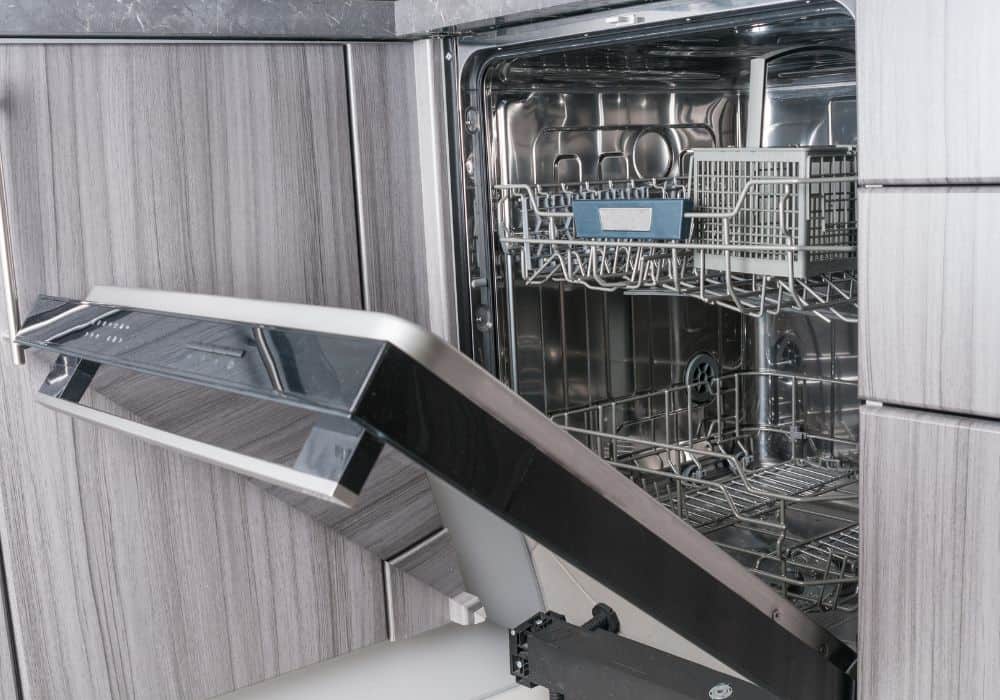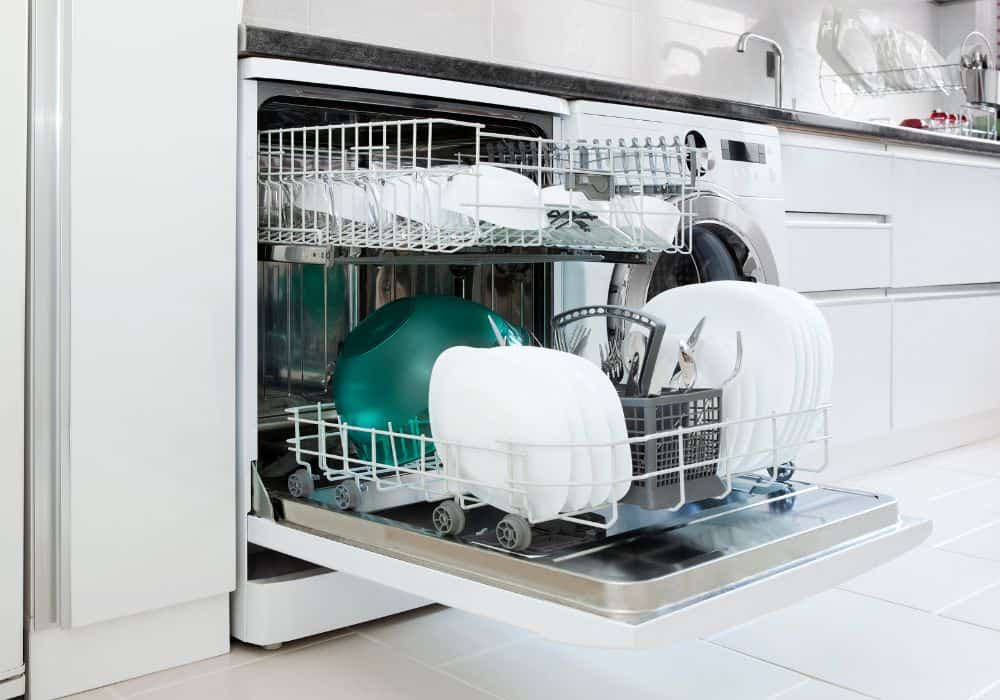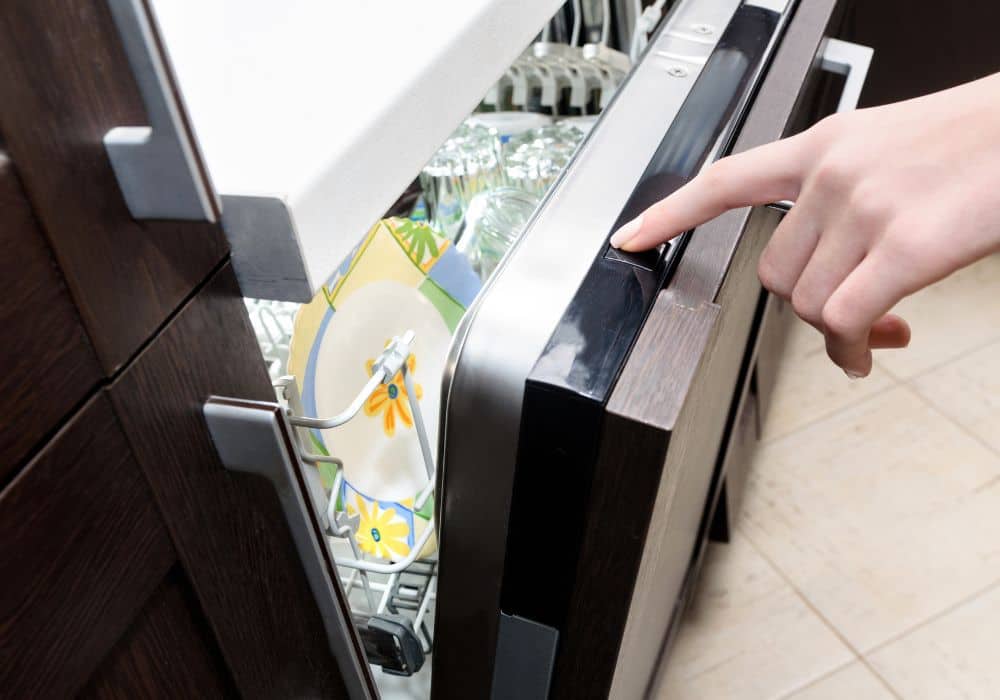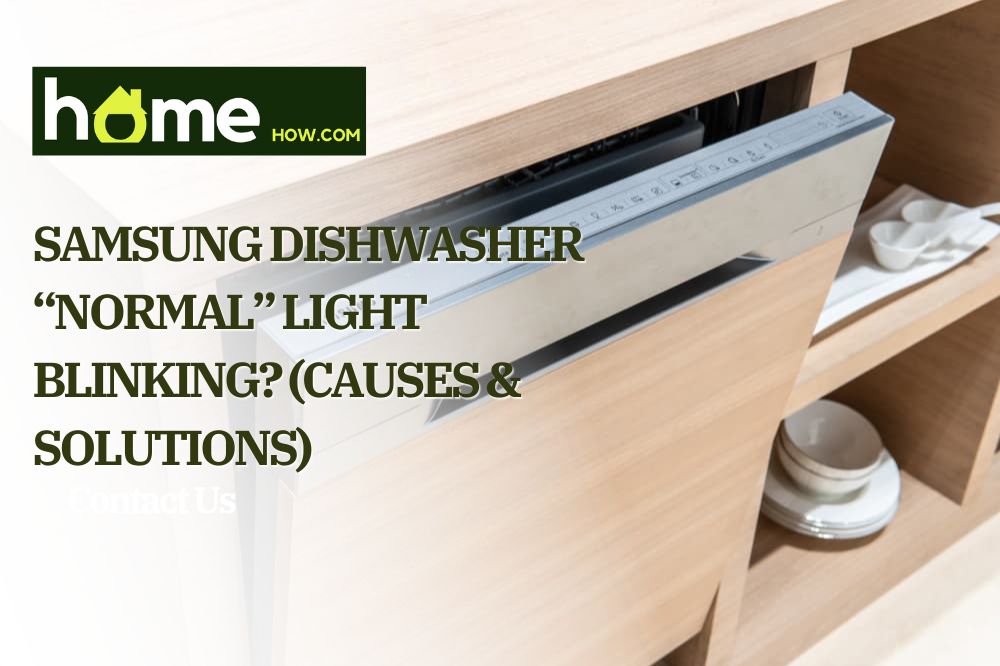Your Samsung dishwasher uses blinking lights on its display to let you know what’s going on in the machine. This may be as simple as telling you where it’s at in the dishwashing cycle or as complex as warning you of potential errors.
It’s a good idea to check for errors when your Samsung dishwasher’s “normal” light starts blinking. The issue may fix itself after you run an empty load, or it may indicate a larger issue.
Blinking lights are not the highest form of communication, but with a few simple tests you can figure out what your dishwasher problem is. Keep reading to learn why your Samsung dishwasher’s “normal” light is blinking, how to fix it, and other error codes that include the “normal” light.
What to Do When Your Samsung Dishwasher “Normal” Light Blinks: Causes and Solutions
When your Samsung dishwasher’s “normal” light blinks on without any other lights blinking, it indicates that the dishwasher’s leak sensor detects moisture somewhere in your machine.
This can happen if you’ve moved the dishwasher recently, if the detergent is overfilled, or if you forgot to remove the garbage disposal cap (when connected).
If it doesn’t clear up after a few minutes, it’s safe to assume there’s an issue somewhere in the machine. The dishwasher then attempts to correct the issue by staying on to drain excess water.
If you feel comfortable diagnosing the issue on your own, run water using an empty cycle to make it easier to detect the leak. Remember to turn off the dishwasher at your breaker box before you start poking around to prevent accidental shock.
The most common reasons for dishwasher leaks include:
- Clogged sink drains
- Damaged seals or hoses
- Clogged dishwasher nozzles or drain filters
- Unlevel dishwashers or those stuck with tight cabinet screws are also likely to leak and cause the “normal” light to blink.
1. Clogged Sink Drains
Clogged sink drains are usually obvious without a flashing “normal” light on your Samsung dishwasher, but other symptoms include:
- Leftover food particles in the sink
- Foul smells
- Slow draining water
- Gurgling noises while draining
Even partially clogged sinks can cause a leak in your dishwasher. You can try to clear the clog using a commercial drain cleaner, but more serious obstructions require hands on attention.
Set a bucket below your sink’s p-trap, then disconnect the pipe from your drain.
Remove the clog from the drainpipe or p-trap before reconnecting your plumbing. If the problem persists, contact a plumber to clear up your clogged sink.
2. Damaged Seals or Hoses
If the sink drain doesn’t seem to be the issue, inspect your dishwasher seals and hoses for damage or poor connections. This includes the:
- Water supply hose to the dishwasher
- Drain hose away from the dishwasher
- Rubber seal around the dishwasher door
Look for water around any of these areas. Even if you don’t see a puddle, feel around the supply and drain connection for any moisture.
Check your water inlet valve while you do this. A faulty inlet valve will leak water where the hose connects to the dishwasher, and it can damage wires connected to the dishwasher’s solenoid valve.
Your Samsung dishwasher has a rubber gasket fastened to the inside of the door to keep all the water and soap inside while washing. The dishwasher may leak if food gets stuck in the seal, or the gasket can deteriorate with time and use.
If you don’t find any stuck food or suspicious tears, take a piece of paper and shut it in the door of your dishwasher. Try to pull the paper out while the door is shut, then repeat the process at all sides of your Samsung dishwasher.

Even a seal without tears should be strong enough to hold the paper in place. If you can pull it out without issue, you need to replace the gasket of your dishwasher.
Samsung dishwashers also have a black rubber flap under the door that will leak if knocked out of place. Check this part by removing the kick plate, and reattach the flap if necessary.
If you find any issues, do not run your dishwasher until you replace the compromised parts.
3. Clogged Dishwasher Nozzles or Drain Filters
While your sink drain might be fine, your dishwasher nozzles and drain filter can clog just as easily. This can cause water to spray erratically in your dishwasher or collect at the bottom, triggering the detected leak code.
It’s good practice to deep clean your nozzle and drain filter regularly. Remove these components and clear them of any leftover mess. Soaking the nozzle and drain filter in white vinegar overnight will remove any mineral or grime buildup, and your dishwasher will clean better.
Some Samsung washers do not have a removable filter. For these, you need to deep clean the bottom of your dishwasher tub to remove as much debris as possible.
4. Unlevel Dishwashers or Tight Cabinet Screws
An improperly installed dishwasher is likely to leak at some point.
Some signs of an improper installation include:
- Visual crookedness of installation
- Racks that roll in or out on their own
- Gaps between dishwasher components
Fix any leveling issues by adjusting your dishwasher legs higher or lower. Use a spirit level to verify the correct alignment for your dishwasher, or call a professional to address the issue.
Tight cabinet screws will cause gaps between certain dishwasher components. You can loosen these on your own to decrease the gaps, but we recommend a professional opinion on this issue.
Other Samsung Dishwasher Error Codes with “Normal” Light
In certain cases, your Samsung dishwasher “normal” light blinks in conjunction with another light to indicate a different issue. The combination communicates the specific issue that your dishwasher is dealing with so that you can address the issue.

These error indicators vary depending on your specific Samsung dishwasher model, but most follow these guidelines for quick and easy diagnoses. Check your manual for error codes specific to your Samsung washing machine.
1. Light Combinations that Mean Your Dishwasher Water is Too Hot
- Normal + Auto
- Normal + Delicate + Quick
- Normal + Delicate + Auto
- Normal + Delicate + Smart Auto
- Normal + Quick
- Normal + (Quick+) + Smart Auto
- Normal + Smart Auto (specifically a water heater error)
- Normal + Smart Auto + Delicate (specifically a water heater error)
When your dishwasher illuminates both the “auto” and “normal” lights, it’s using water that is too hot for proper operation. High dishwasher temperature will damage certain components, so it’s important to deal with the issue promptly.
In some cases, running an empty dishwasher through a normal cycle while using detergent can clear these issues.
Make sure that the water supply for your dishwasher does not exceed 176°F. If your supply water is the right temperature, it’s likely you need to replace the temperature sensor.
Contact a repair technician if you verify proper temperature and the error persists.
2. Light Combinations the Mean a Dishwasher Button is Stuck
- Normal + Delicate
- Normal + (Quick+)
- Normal + Auto + Express 60
When these lights pop up together, you need to find and unstick the culprit.
Disconnect your dishwasher, then touch all the buttons. This allows you to treat the issue without messing with existing settings.
Contact a repairman if you cannot find the stuck button and the code returns. This usually means that one of the buttons is not working correctly and needs more direct attention.
3. Light Combinations that Indicate a Short-Circuited Thermistor

- Normal + Heavy
- Normal + Heavy + Express 60
The thermistor monitors water temperature in your dishwasher to prevent it from using dangerously hot water. This component shuts off the heating element to keep your dishes and your machine safe from heat damage.
Replace the thermistor yourself or have a repairman do this before you use the machine again.
4. Light Combination that Means Your Dishwasher Isn’t Using Enough Water
- Normal + Heavy + Quick
- Normal + Heavy + Smart Auto
A dishwasher that doesn’t use enough water cannot clean your dishes properly. To correct this issue, first make sure your water supply valve is open and unobstructed. Then empty your dishwasher and run it through a normal cycle (using detergent).
If the problem persists, check for a frozen or clogged inlet valve. Turn off the power at the circuit breaker prior to any additional repairs, and contact a repairment for unidentified issues.
5. Light Combinations the Mean Your Dishwasher Uses Too Much Water
- Normal + (Quick+)
A dishwasher uses too much water when it has a faulty water inlet valve or float switch. Dishwashers with these issues should still drain completely.
Check the water inlet valve for signs of damage first. This is easier to access, diagnose, and replace.
If the water inlet valve appears to be in fine condition, find the float switch. You must take out the bottom rack of the dishwasher, then locate the switch at the bottom of your dishwasher.
If the float switch is stuck, use a soft toothbrush or nylon cleaning brush to remove any loose debris.
You can also test the float switch with a multimeter to verify its connection. A float switch without continuity should be replaced before using your dishwasher again.
Conclusion
It’s best to deal with a Samsung dishwasher that’s “normal” light is blinking sooner rather than later to prevent devastating leaks or other issues.
If you’re not hiring a technician, remember to check for:
- Clogged sink drains
- Damages seals and hoses
- Clogged dishwasher nozzles or filters
- Unlevel machines
If you have any questions about your dishwasher or similar stories to share, comment below!
